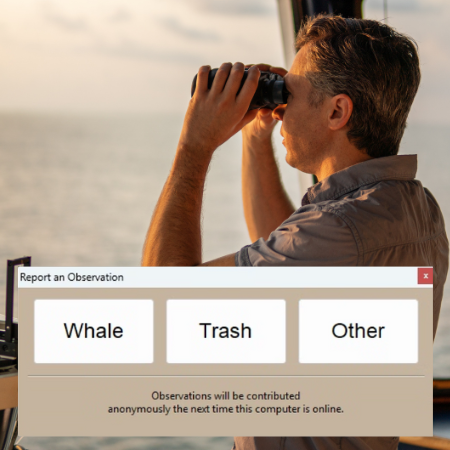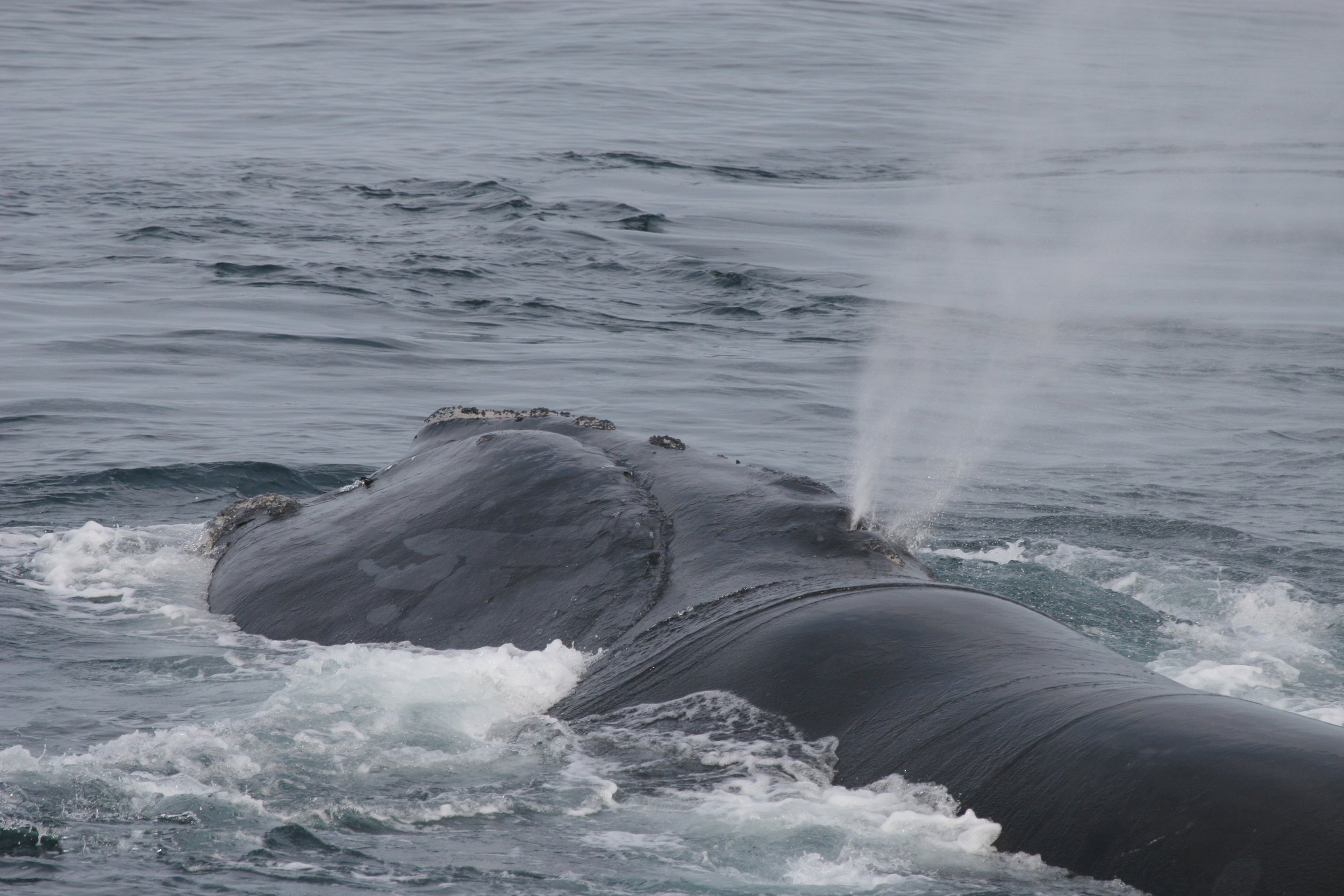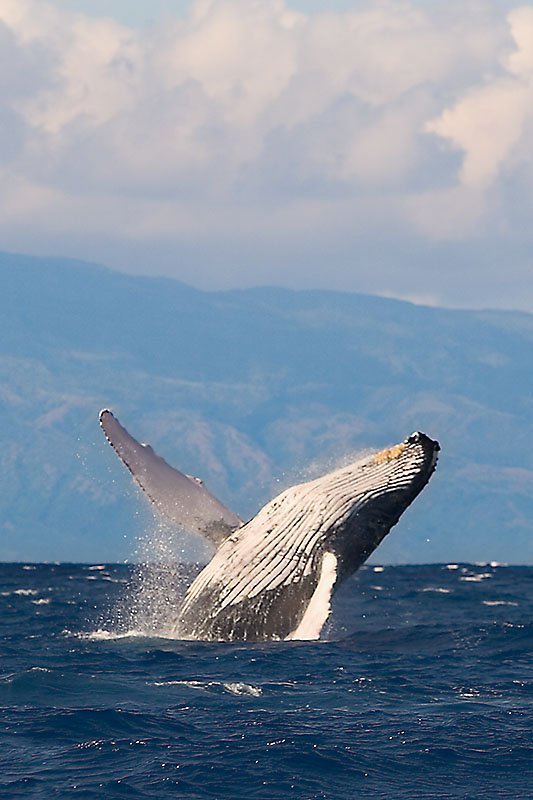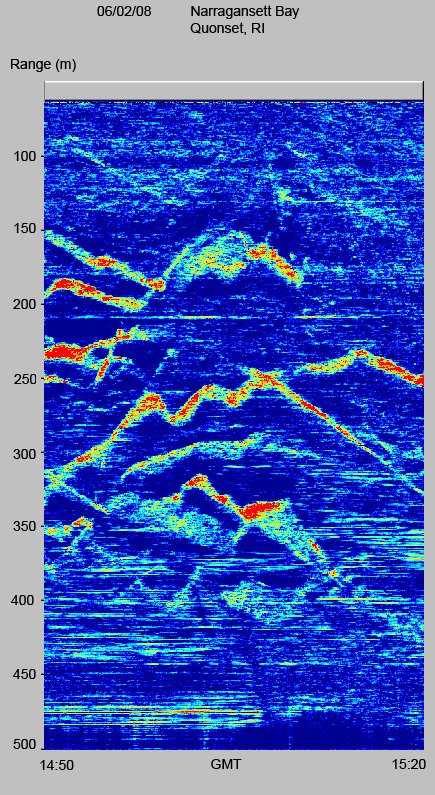Reducing the Risk of Whale Shipstrikes
As January 16th, 2025, NOAA has withdrawn proposed amendments to the North Atlantic Right Whale Vessel Strike Reduction Rule under the Marine Mammal Protection Act. However, this doesn’t mean that the North Atlantic Right Whales are no longer in danger.
There are only about 370 of these amazing creatures left with only about 70 breeding females remaining. Shipstrike has been the leading confirmed cause of death and the second leading cause of injury since the beginning of the Unusual Mortality Event which started in 2017.
In October 2024, NOAA Fisheries estimated that there were 372 (+11/-12) individual North Atlantic right whales alive during 2023. The annual population abundance and death estimates displayed in this infographic were calculated using the model described in Linden 2024. The documented birth data displayed in this infographic reflect the number of mother-calf pairs that were visually sighted in the Southeast U.S. through the most recent calving season. Credit: NOAA Fisheries
There is significant evidence that reducing speed when operating in areas with whales reduces the risk of injury and death from shipstrike. However, speed reduction is not the only way risk can be reduced. No boater or vessel operator wants to have a collision with any in-water obstacle regardless of whether it’s a whale, an iceberg, coral head, rock, or floating container. A collision can result in a serious impact (sorry for the bad pun) on the vessel as well as the environment.
A variety of existing, off-the-shelf products and technologies can be used to help reduce navigation risks for the vessel operator. One such technology is 3D Forward Looking Sonar such as FarSounder’s Argos series navigation sonars. These systems are safe for marine life and can provide the navigator with information about what is ahead of the vessel underwater out to 1000m range. In fact, one of the early motivations for FarSounder in developing our technology was reducing a boat or ship’s environmental impact: How can we help vessels avoid hitting whales causing ship strikes and how can we help vessels avoid hitting rocks and corals causing oil spills.
North Atlantic right whale #3230 "Infinity" and her calf were struck off the coast of Florida in February 2021. Her calf pictured above died from the strike. “Infinity” was spotted several days later with injuries suggestive of a vessel strike. - Photo: Florida Fish and Wildlife Commission. All photos taken under NOAA permit 18786. Credit: NOAA Fisheries
Another relevant technology that can be used to reduce whale shipstrike risk is above water thermal, optical, and infrared cameras. When matched with automated image processing “watch keepers”, these camera systems have the potential to catch brief glimpses of whales when they breach and lift their tails when diving.
North Atlantic Right Whale blowing. Credit: NOAA
No single sensor can detect all hazards in all conditions all of the time. However, when coupled together, matching sensors across multiple domains further reduces risks and above water cameras are clear compliments to below water 3D forward looking sonars.
Of course, not every vessel can justify the installation of today’s most advanced technologies. It's for this reason that FarSounder is an official member and I’ve been an active participant of the Whale and Vessel Safety Taskforce (WAVS). WAVS is an industry group focused on connecting various existing products and technologies into a holistic solution for whale detection and shipstrike risk reduction. The Taskforce’s goal is to facilitate the collection of whale observations from shipboard sensors, aerial and space based sensors, and visual sightings, enable statistical analysis of the whale data, and then disseminate information about high risk locations to every vessel on the water.
For so many of the people who are part of the maritime community, the allure of nature and the ocean’s grandeur plays a huge role in what drove them to a career or leisure activity on the water. I think we’re all in agreement that we’d like to preserve the majesty of what motivated us. We need to act now before it’s too late to save the North Atlantic Right Whales. And it's not just a right whale issue. Eastern Mediterranean Sperm Whales are at a similar level of endangerment and are hugely impacted by shipstrike. Southern Resident Killer Whales also suffer dangerous levels of shipstrikes. The list goes on and on. Check out our whales application page to learn more about how FarSounder’s products can play a role in your risk management strategies.
The next time you are out on the water in an area where there could be whales, I urge you to think about what actions you can take to help reduce vessel ship strike. Even if you’re simply whale watching, be sure that you are following all local regulations. The International Whaling Commission has a fantastic online handbook on responsible whale watching and how you can even support research and conservation efforts.








